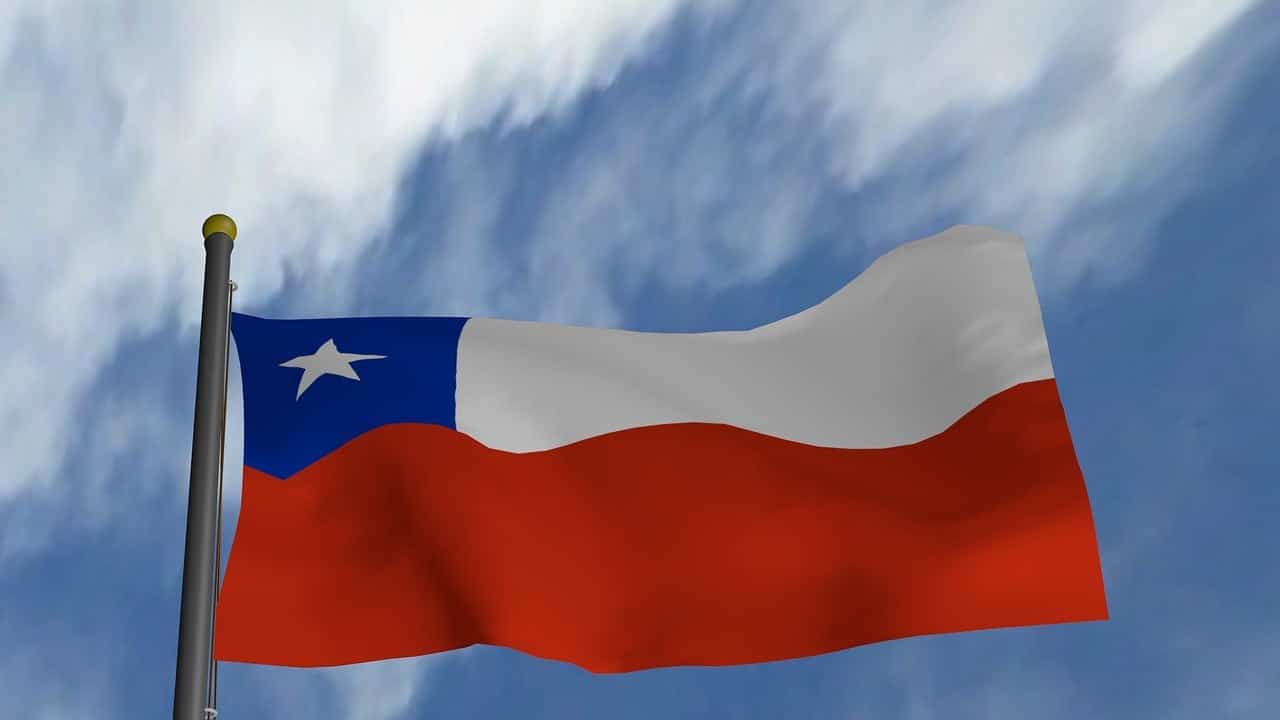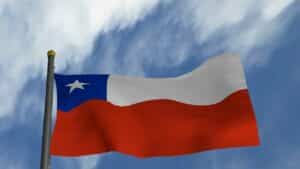Chile is the leading seed exporter in the entire Southern Hemisphere.
Globalization is transforming many industries, including the seed sector. A pivotal factor in moving agriculture forward is South America’s ability to provide contra-season production to the North American (and, increasingly, global) seed markets, which significantly bolsters agricultural productivity and strengthens worldwide food security.
Chile exports approximately three per cent of its total agricultural production. Domestically, seed production is just a small part of the country’s overall agriculture economy compared to larger, high-value, high demand domestic and export crops including various fruits. Still, Chile is the leading seed exporter in the entire Southern Hemisphere, according to the International Seed Federation. In 2022, Chilean seed exports, including physical exports and research and development services, totaled $350 million. Of total seed industry exports, vegetables led the way at 47%, corn was second at 23% and canola accounted for 7%.
Canadian-based HyTech Production Ltd. has been a leader in Chile’s contra-season operations for more than two decades. It, like most contra-season companies, provides certified hybrid seed production and breeder seed inbred line maintenance and multiplication services. Its core product is canola, but it also maintains a strong supply of fall rye, hemp, mustard and other crops. The general manager for HyTech’s Chile division, Cristina Alucema, says there are a host of reasons that make Chile an ideal and obvious choice for contra-season production.
“Chile provides a competitive advantage like no one else,” she says. “It’s a beautiful country where you can find different geographic areas to suit different growing conditions. Even details as specific as how the direction of the sun affects the plants suit the work we do. And we’ve got all the necessary logistics in place: access to inputs, access to irrigation, access to all the transportation systems and processes we need to move seed efficiently.”

Chile’s contra-season benefits also include production isolation. The valley between the Andes Mountain range and the Pacific provides a relatively narrow and isolated corridor for production, limiting potential disease and pest contamination. With northern Chile’s full desert and a cooler climate in the south, the country also offers a variety of production areas.
From a regulatory perspective, Chile makes production and the international movement of seeds as efficient as possible.
“We have the freedom to operate, though GMO crops cannot be commercialized here,” Alucema says. “Our phytosanitary regulations are very strong. Our regulatory body has done a very good job ensuring that Chilean seed is suitable for any market.”
A “can do” attitude can go a long way
Sending seed worldwide comes with a host of challenges including weather, regulations and language barriers. Alucema meets them all with a “can do” attitude. She says it’s not just a personal attitude, or a HyTech attitude, but an entire Chilean contra-season seed sector attitude.
“We want to serve our customers’ needs the best way we can,” she says. “We are open to customer demands and customer needs, regardless of who the customer contacts (within the association). We do what we have to to meet the need and make Chile look good. I remember right after the (2010) tsunami, and even for quite a long time after, we worked together with all the seed companies to make things work for our customers.”
If a customer asks for an ultra-short turn-around time, Alucema says the Chilean seed industry can deliver.
“If I need to have one metric ton of seed in Canada, let’s say a week from now, I have all the conditions to make it work. That’s not a problem. Even if we have a tsunami or an earthquake, if you serve a market, you find ways to make it work.”
That attitude has translated to international confidence in Chile’s ability to meet market needs.
“Customers have been showing more trust that we can perform and execute in a timely manner, and also fulfill quality assurance requirements. We’ve worked very hard to build that trust,” she says.
Understanding and innovatively harnessing globalization is key to agriculture successfully meeting the dual challenges of climate change and feeding a growing population. Contra-season production is a major part of that effort. That said, sending seed around the world isn’t always entirely easy.
While the global pandemic, technology and social media applications have all made the world seem smaller and more relatable, challenges abound when producing seed for customers on the other side of the world. The pandemic did not spare Chile’s contra-season seed industry, which struggled under the same restrictions, staffing challenges, and transportation woes that countries faced around the world. While the stresses of the pandemic are now largely over, some more ‘normal’ challenges remain. The top of that list is still transportation, though not for the reasons most would guess.
“We compete for airline space with the salmon industry and the mining industry,” she says. “Normally airlines dedicate space to the salmon industry because their product is perishable. Also, [airlines] move a lot of gold as cargo in the summertime. So, we must fight for space.”
North America… and beyond!
Modern technological advancements have paved the way for scientific improvements in seed breeding, leading to genetically superior seed varieties. Industry appreciates how enhanced seeds offer higher yields, better disease resistance and more climate resilience. Contra-season growing allows South American companies to expedite seed multiplication and breeding programs during the Northern Hemisphere’s off-season, dramatically accelerating research and development’s pace. Scientists can fast-track new seed varieties, providing farmers with far quicker access to improved seed technologies, ultimately bolstering agricultural productivity and enhancing global food security.
South America supplies contra-season grown seeds from brassicas and grapes to soybeans, canola, wheat and more. Chile’s reliable contra-season production — now operating for 40 years ¬≠— has cemented the country’s reputation as a reliable and essential partner in North America’s agricultural supply chain.
Canola — a vital crop for Canada — emerged as a significant segment for Chile about 30 years ago. Chile signed its first trade agreement with a G7 economy 26 years ago, with Canada playing a pivotal role in the collaboration. Today, nearly all Canadian seed companies rely on Chile for contra-season breeder nursery work, parent line production, and commercial hybrid production.
Today, however, “it’s not only about canola,” says Alucema. “It’s about soybeans, oats and wheat, you name it, we are growing to better serve our markets.”
Canada certainly isn’t the only country that looks to Chile for seed. Chile meets demand from Europe, South Africa, Central America, Australia and other parts of South America.
“Around the world, seed industries are struggling with increasing natural challenges, so are looking for new solutions. Australia’s agriculture industry, for example, is looking to explore markets and build partnerships in regions that are geographically similar, offer strong phytosanitary assurances, and can coordinate timely transit times. I never imagined that I would be involved in this industry and that it would open my world this big,” says Alucema.
What’s next for Chile?
Alucema says the future looks bright for the Chilean seed sector.
“I see the demand for contra-season continuing to increase as a result of annual production challenges in the Northern Hemisphere, pressure to accelerate new product launches, and the development of new technologies like gene editing,” she says. “I believe there is room to increase contra-season production. There are professional companies like HyTech Production focused on increasing capacity; the regulatory system managed by SAG is functioning well; and — most importantly — there is land available which meets the criteria for expansion.”
As the Chilean seed sector continues to come into its own, Alucema expects it to evolve still further.
“I do believe that the Chilean market is starting to consolidate and being seen as a serious market. I see the regulatory body has much more understanding of small production. I see that the growers are becoming much more efficient and professional in what they do, and they are changing their attitudes about farming. Working with growers who have been with us for probably 10 years or maybe longer, you see them understanding that there are good years, there are bad years, but you stay in making it work. I see they are understanding that this is business you start to commit to and that makes a business that is much more stable.”
Technology, which is being increasingly welcomed in Chile, is a big part of the country’s ability to meet contra-season needs.
“Agriculture is one of the areas that you can see and appreciate how technology is affecting every single stage of the whole process. You see one season a crop seeded with one machine and the next season that machine is already replaced with something better. There’s cameras and GPS. We recently had some flooding, and we needed to apply some products, so we just went with drones and applied those products. We’re using apps now to provide on-time live information to customers so they can see exactly how the crop is growing right at that moment. Technology is so important. We’re constantly finding ways to be more efficient and keeping it cost effective for the customers but at the same time keeping the quality of the seed our main goal.”
The push towards sustainability will be another key driver of change. Alucema says HyTech specifically, but also the larger seed sector, is stepping towards producing more with less impact.
“We are committed to being an active actor that contributes, encourages and promotes best practices to ensure we grow seed efficiently using fewer resources.”
At a regulatory level, the government is also taking a stronger position on establishing and enforcing improved sustainability. For example, the Extended Producer Responsibility (REP) Law that came into force last March establishes that producers, regardless of the industry or sector, are responsible for giving value to the entire cycle of use of containers and packaging.
Certainly, challenges exist. Top of that list is land availability, as permanent, competitive, high-value crops take land out of field-crop production. Water availability is also challenging in some years and regions, though varies from year to year. Still, Alucema is confident in Chile’s ability to meet growing demand.
“Contra-season seed production is a key strategic piece of the supply chain for the North American canola industry,” she said. “Most Canadian companies rely on Chile’s contra-season breeder nursery work, parent line production and commercial hybrid production. We’re focused on meeting that demand today and, in the future, too.”
The one thing she’s very sure of? There’s a lot more to learn in an industry that is constantly changing.
“I can’t even think of one season that similar to another. There is always something new, always a new challenge, always something that you have to deal with. If you take into consideration that we’re on the other side of the world from our main markets, then add to that the geography, add to that our earthquakes, and then, of course, we’ve had the disruptions of the pandemic and so on and so on. But we’re in Chile, we like challenges. We’re ready for whatever comes next.”












